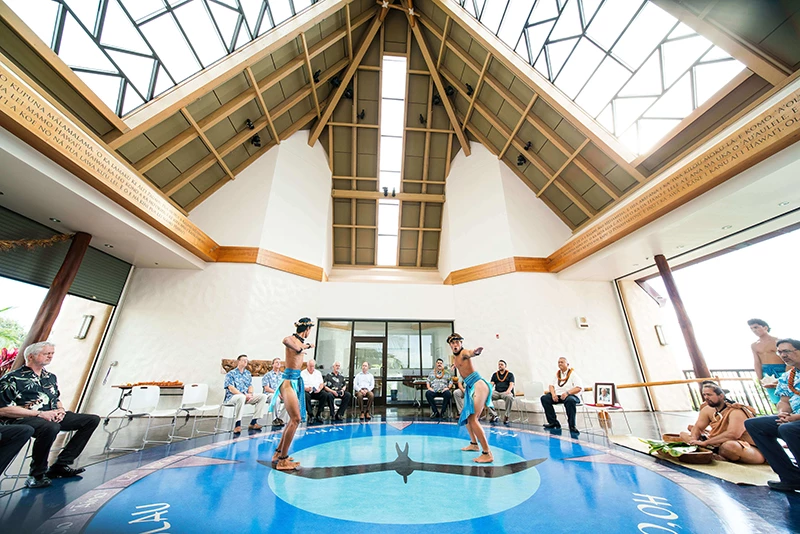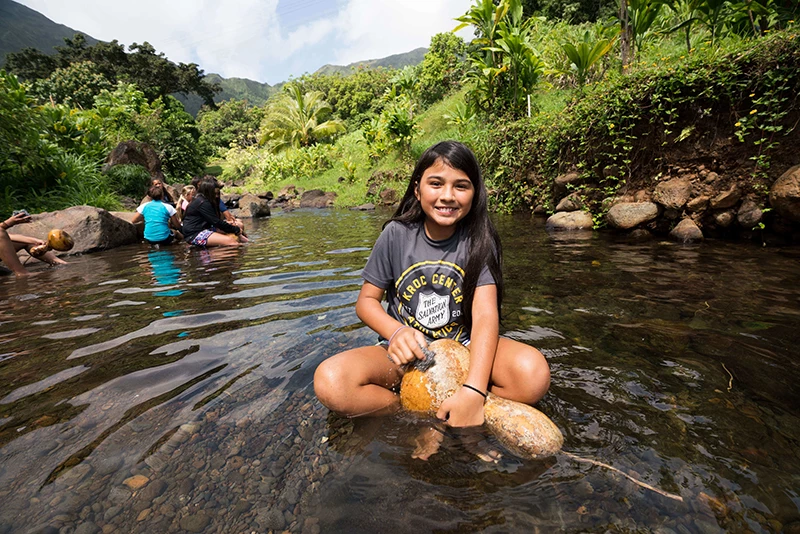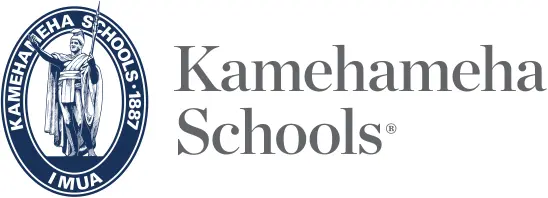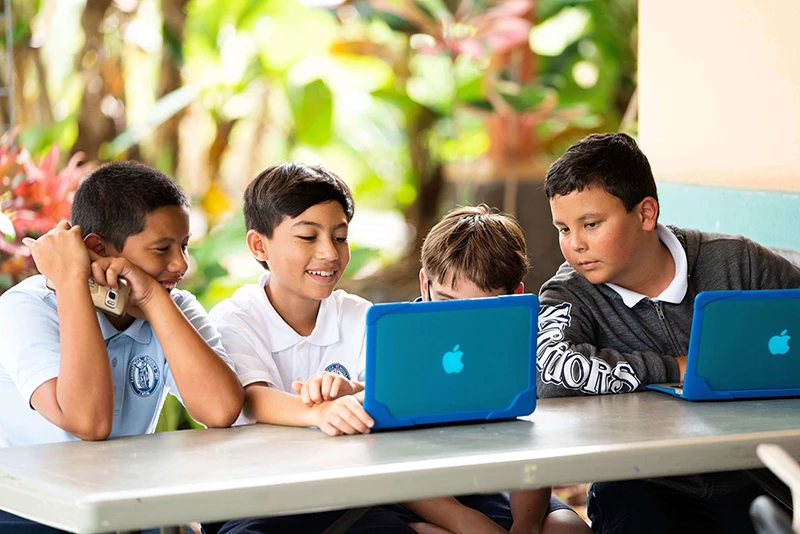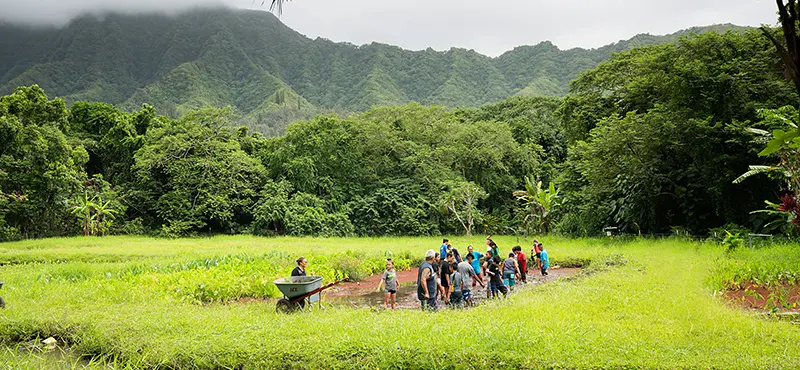The Kamehameha Schools Community Education Division was recently renamed Kūamahi to reflect the group’s alignment with Goals 1 and 2 of SP2020, the organizational effort to normalize ʻōlelo Hawaiʻi through new naming practices across the KS school system and to honor Kamehameha ʻEkahi’s Mahi lineage.
“Our inoa Kūamahi, is a reference to our aliʻi, Kamehameha (and his Mahi lineage) during the times that he would stand with and work alongside the makaʻaināna,” says Waiʻaleʻale Sarsona, Kūamahi’s managing director. “This ʻano and hana of Kamehameha describes our approach in our work – to stand within and working with our communities.” [Reference The Battle of Nuʻuanu and Kamehameha and Warrior Kekūhaupiʻo]
The group’s mission, Kū i ka Hawaiʻi (Hawaiian culture foundation) is guided by KS’ Vision 2040 and the Education System’s Hawaiian Culture-Based Education framework. At its core, Kūamahi utilizes Hawaiian ways of knowing and teaching for its learners so that the communities they serve are healthy places to thrive.
Kūamahi includes, the Network of Native Hawaiian Schools, headed by Director Kēhau Abad, Kealapono (PreK-grade 8) and Kealakūlia (Secondary Education, College, Career and Leadership) led by Directors, Nani Fujiwara and Kēhau Puʻu respectively. Kūamahi’s work is guided by four guiding principles:
Kūpono (excellence): Continually striving for the best in all that members of Kuamahi does as members of the lāhui through indigenous ways of knowing and learning (ʻike, ʻōlelo, mauli ola, pikoʻu, pilina, etc.).
Aukahi (united, flowing together): The work of Kuamahi is fluid and complementary to those it serves and works alongside. Cohesive and collaborative with schools, community and ʻohana while sharing the kuleana of instruction and experiential learning through indigenous ways of knowing and learning are paramount to its success.
I Ola ka Lāhui (community/Lāhui): Members are motivated by the goal to see a “thriving Lāhui.” The term “ola” in this principle embodies the full spectrum of well-being and its implied term “mauli ola.”
Kū I ka Hawaiʻi – Hawaiian Culture as its foundation, in a Hawaiian way.
“Kealapono, Kealakūlia and the Network are blessed to have the opportunity to do this important work with our keiki and ‘ohana,” said Fujiwara, director of Kealapono. “From our tiniest learners to those beginning their college and career journey,” Kūamahi will emulate the work ethic of our aliʻi and work alongside our communities to ensure a thriving, vibrant Lāhui.”
The name Kūamahi also refers to Kamehameha ʻEkahi’s Mahi lineage which traces back to Kamehameha’s great-grandfather, High Chief Kaʻuaua-Nui-a-Mahi of the Kohala district on Hawaiʻi island.
“It is important to honor our kūpuna when considering a name that will give life to the work we do with each other and within our communities,” added Sarsona. “Ola ka inoa – there is life in a name.”
It is important to honor our kūpuna when considering a name that will give life to the work we do with each other and within our communities. Ola ka inoa – there is life in a name.
Waiʻaleʻale Sarsona, Kūamahi Managing Director
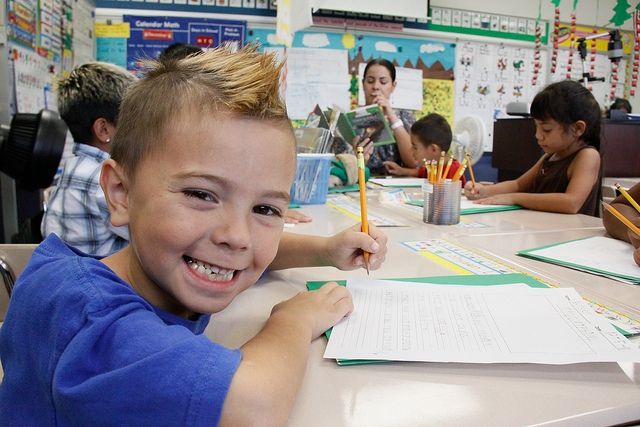
KS’ Literacy Instruction and Support, under Kealapono, delivers direct instructional services grounded in Hawaiian culture to Hawaiʻi keiki through select Department of Education collaborator schools.

Ka ʻUmeke Kaʻeo Public Charter School is one of 17 Hawaiian-focused charter schools supported by Kūamahi through the Network of Native Hawaiian Schools.

Emerging leaders from KS’ Kūlia I Ka Pono program under Kealakūlia are challenged to recognize and build upon their personal strengths as they examine traditional and modern leadership qualities.
TAGS
CATEGORIES
Kaipuolono Article, Newsroom, Community Education
Print with photos
Print text only

